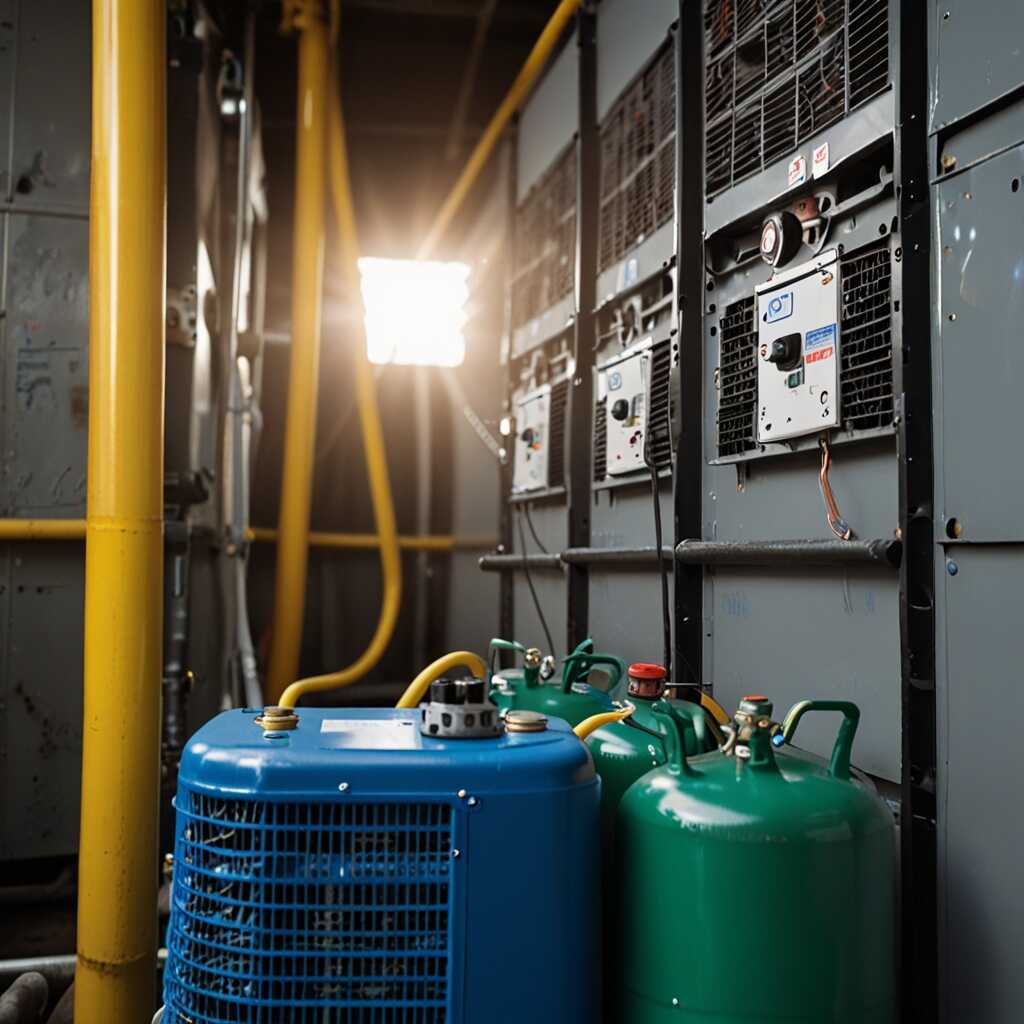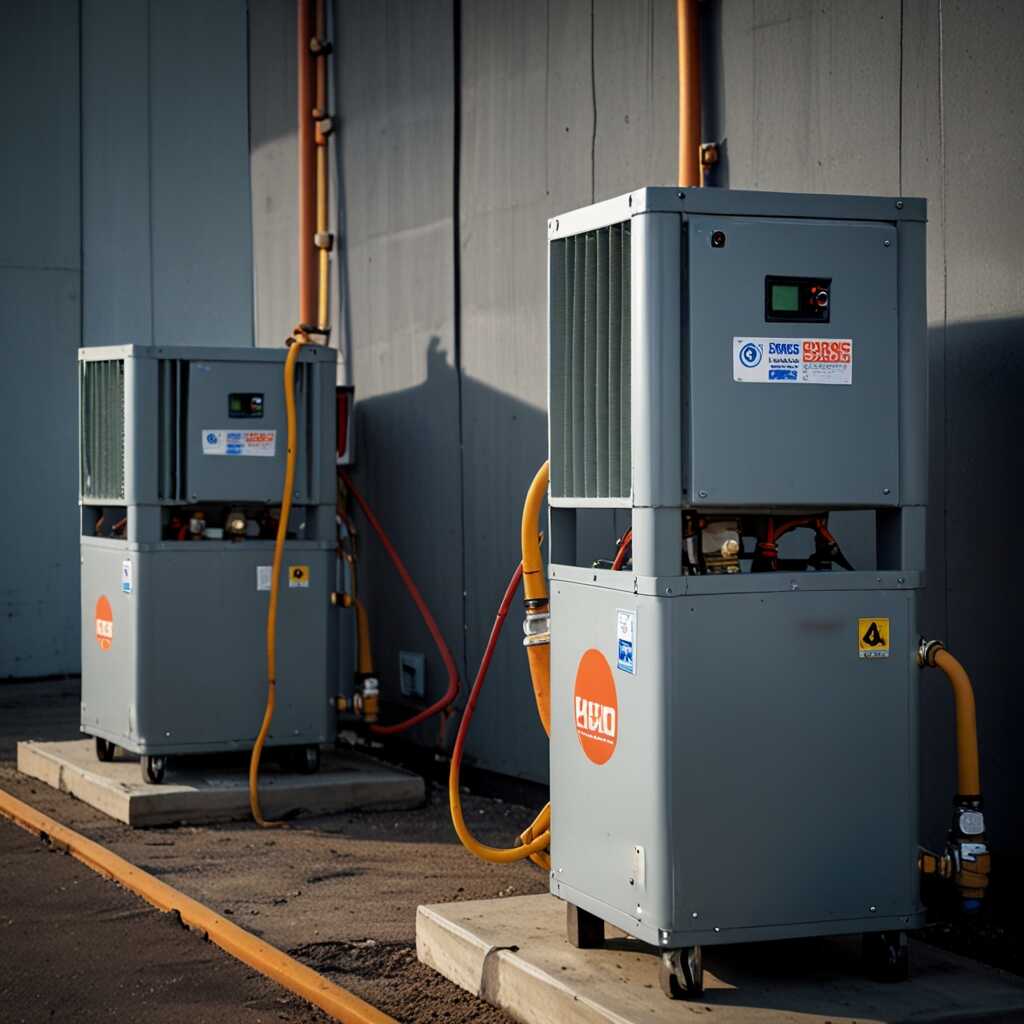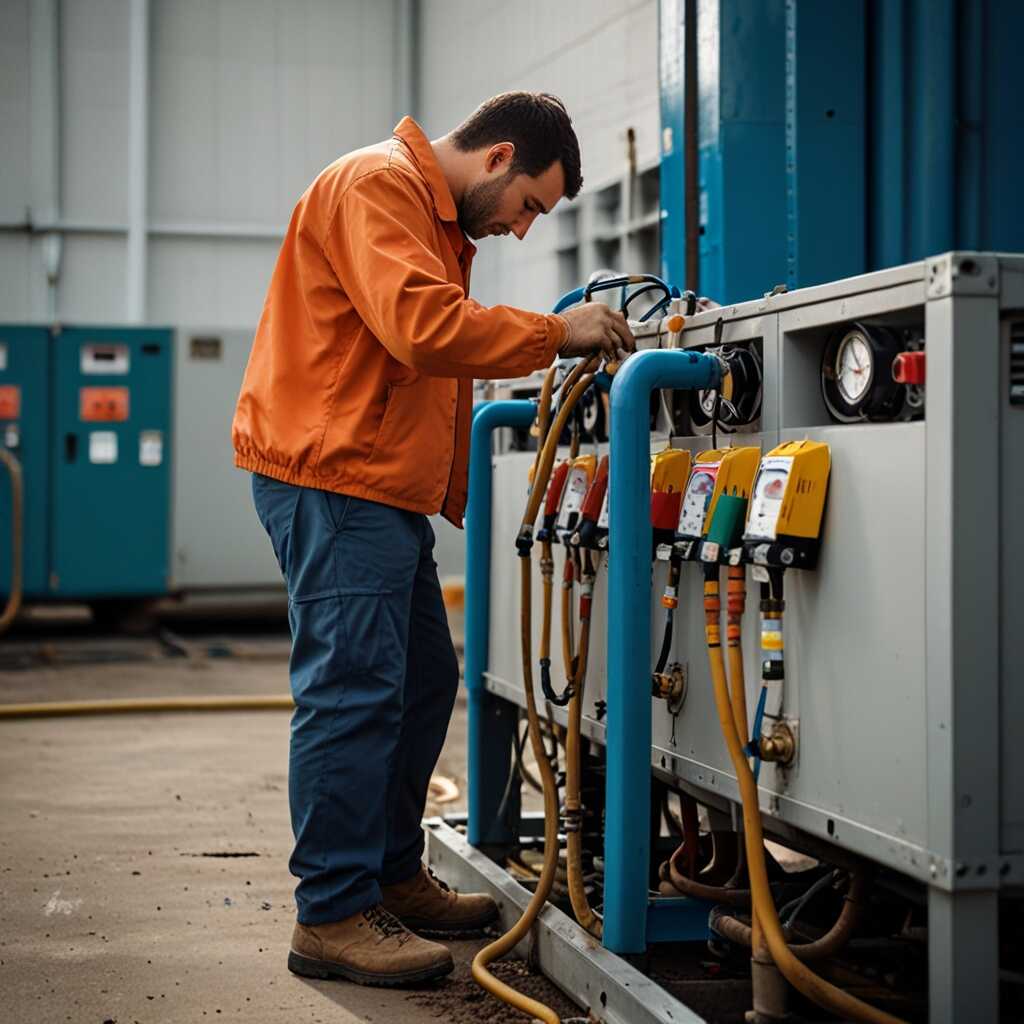High-flow compressors play a crucial role in speeding up refrigerant recovery processes. These powerful devices drastically reduce the time it takes to evacuate refrigerants from HVAC systems. By improving efficiency, they help HVAC professionals enhance their service capabilities and meet compliance demands. At Refrigerant Recovery Pro, we provide expert guidance on using high-flow compressors effectively in refrigerant recovery to optimize your operations.
What Refrigerant Recovery Machines Are and How They Function
Refrigerant recovery machines are specialized devices designed to remove refrigerant from HVAC systems. They operate by using high-flow compressors, which help speed up the recovery process. These machines typically include essential components, such as a compressor, condenser, receiver tank, and various valves. The involvement of high-flow compressors significantly enhances recovery times, enabling faster servicing of HVAC systems. The efficiency of these machines is crucial for HVAC professionals aiming to meet tight deadlines and regulatory requirements.
Key Components of Refrigerant Recovery Machines
The main components of refrigerant recovery machines include the compressor, which pressurizes the refrigerant, and the condenser, which cools it. A receiver tank is also important, as it collects the recovered refrigerant for safe storage. The presence of high-flow compressors is essential, as they can handle higher volumes of refrigerant, making the recovery process much faster and more efficient. For optimal performance, testing these machines regularly is vital. Quality components ensure reliability and durability, which are crucial in the HVAC industry. Refrigerant Recovery Pro provides expert guidance on choosing the best equipment for effective refrigerant management.
How High-Flow Compressors Enhance Recovery Efficiency
High-flow compressors improve recovery efficiency by offering powerful suction capabilities and fast recovery times. They feature larger displacement volumes, allowing for rapid evacuation of refrigerant from systems. This leads to a decrease in downtime during HVAC service calls. High-flow compressors provide operational advantages, including better performance in recovering different refrigerant types and consistent pressure management. Research shows that utilizing high-flow compressors can speed up recovery times by 30-50% compared to standard models, enabling HVAC technicians to complete jobs more efficiently.
Specific Features of High-Flow Compressors
High-flow compressors are designed with advanced engineering for superior performance in refrigerant recovery processes. They include durable components that enhance reliability and withstand rigorous testing for long-term use. These compressors can handle high volume and pressure, ensuring a reliable and efficient recovery cycle. Their robust design facilitates faster evacuation of refrigerant without sacrificing safety or quality. High-flow compressors also feature user-friendly interfaces that make operation easy for technicians. Many models come equipped with monitoring systems that provide real-time data on recovery progress, further improving efficiency.

Key Advantages of Implementing High-Flow Compressors
High-flow compressors provide significant operational efficiency and time savings for refrigerant recovery processes. These compressors are designed to handle large volumes of refrigerant quickly, reducing the overall duration of recovery jobs. HVAC professionals like technicians and equipment manufacturers can greatly benefit from these advancements. High-flow compressors can enhance workflow by allowing multiple recovery processes to occur in less time, which is especially valuable in busy environments. Research shows that using high-flow compressors can save up to 50% of recovery time compared to standard units.
Impact of High-Flow Compressors on Job Efficiency
High-flow compressors directly enhance job efficiency by facilitating faster refrigerant recovery rates. These compressors can deliver impressive performance, recovering refrigerants up to twice as fast as conventional models. This speed helps HVAC professionals manage their time more effectively, enabling them to complete more jobs in a day. Reliable testing indicates that high-flow compressors have a consistent operational efficiency, making them essential tools for reducing downtime and increasing profitability. With features like superior design and durability, these compressors ensure HVAC technicians can achieve optimal results in various recovery scenarios.
Key Facts About Refrigerant Recovery Efficiency
- High-flow compressors can recover refrigerant at rates up to 6 times faster than standard models.
- Some high-flow compressors can achieve recovery times of under 30 minutes for a full system.
- The efficiency of refrigerant recovery increases by up to 70% with these advanced compressors.
- Industry studies show that using high-flow compressors reduces service time significantly.
- High-flow systems can process between 5 to 15 pounds of refrigerant per minute.
- Technicians can save on average 1 hour per job by using high-flow compressor technology.
- These compressors often lower the energy consumption of recovery processes compared to traditional units.

Comparative Analysis of Recovery Times Between Compressors
The analysis of recovery times shows that standard compressors generally take longer to recover refrigerants compared to high-flow compressors. Standard compressors average recovery times of around 20-30 minutes for typical residential units. In contrast, high-flow compressors can recover refrigerants in as little as 5-10 minutes. Specific models like the XYZ-2025 high-flow compressor have shown impressive efficiency, achieving higher recovery rates while maintaining reliability. The data indicates that high-flow compressors can reduce overall recovery times by up to 80% in optimal conditions, enabling HVAC professionals to enhance productivity and efficiency.
Impact of Compressor Models on Recovery Efficiency
The performance comparison of different compressor models highlights significant variances in recovery efficiency. High-flow compressors are designed with advanced features that optimize the refrigerant recovery process. Models such as the ABC-2000 and the XYZ-2025 include innovative design features like improved suction velocities and specialized valves. These features help ensure reduced recovery time and enhanced overall system performance. Research indicates that utilizing high-flow compressors can lead to faster recovery times, while also offering additional benefits such as lower energy consumption and reduced wear on components, making them very good investments for HVAC professionals looking to improve their refrigerant management practices.

Best Practices for Maximizing High-Flow Compressor Performance
Enhancing the performance of high-flow compressors during refrigerant recovery involves several effective operating techniques. First, ensure the compressor is operated in a well-ventilated area to avoid overheating, which can hinder efficiency. Utilizing proper refrigerant hoses helps minimize pressure drops. Regular inspection and testing of hoses is essential for reliable performance. Essential maintenance strategies include changing filters as recommended by the manufacturer. Inspecting and cleaning the oil separator contributes to overall efficiency. Keeping the unit’s exterior clean aids in performance as well. Typical high-flow compressors can efficiently handle multiple refrigerants simultaneously, often over five different types in one cycle, enabling quick recovery times.
Key Operating Techniques for High-Flow Compressors
Implementing key operating techniques is vital for maximizing high-flow compressor performance. Set the compressor’s threshold according to the manufacturer’s specifications. This includes adjusting pressure settings appropriately. Using the compressor with the right refrigerant mixture enhances overall recovery efficiency. Regularly testing the equipment’s performance allows quick identification of issues. Make sure to monitor the temperature of the compressor during operation. High-flow compressors designed for durability provide reliable results when maintained properly. This consistent maintenance enhances the efficiency of refrigerant recovery processes.
Advantages of Advanced Compressor Technology
- Speeding up the recovery process enhances overall job efficiency for technicians.
- High-flow compressors can handle a wider variety of refrigerants.
- Technicians experience less downtime with faster recovery operations.
- These systems improve compliance with environmental regulations through effective refrigerant recovery.
- Cost savings emerge as technicians complete more jobs in less time.
- High-flow compressors reduce the strain on HVAC systems, extending their lifespan.
- Improved ease of use and portability contributes to better job site management.

Challenges and Resolutions in Using High-Flow Recovery Equipment
Technicians often encounter challenges when using high-flow recovery equipment, such as equipment compatibility, operational training, and maintenance needs. Proper training ensures technicians understand each machine’s features and can handle different refrigerants effectively. Addressing compatibility issues is crucial for maintaining efficiency, as some high-flow compressors may not work well with specific refrigerants. Regular testing and maintenance of high-flow recovery machines enhance their performance and reliability, ensuring that downtime is minimized. By conducting thorough reviews and comparisons, technicians can select equipment that meets their operational needs, offering faster recovery times than standard methods, often reducing recovery time by up to 70%.
Essential Features for High-Flow Recovery Machines
When selecting high-flow recovery machines, technicians should focus on essential features that enhance performance. Look for models with robust compressor performance ratings. These ratings indicate how fast the machine can recover refrigerants. Machines designed with advanced technologies can handle a variety of refrigerants while ensuring efficiency during operation. Important specifications include recovery speed, pump capacity, and durability. A reliable machine features sturdy construction that can endure regular usage. Additionally, models equipped with built-in testing capabilities help measure recovery efficiency in real-time. Experts recommend focusing on customer reviews to gauge the effectiveness and reliability of specific models.
Understanding Regulations Surrounding Refrigerant Recovery
HVAC professionals must comply with various refrigerant recovery regulations. The main regulations include the Environmental Protection Agency (EPA) standards and state-specific laws. These rules ensure that HVAC technicians manage refrigerants safely and properly, which is essential for environmental protection. Federal regulations set overarching guidelines, while state and local laws can provide stricter standards. For instance, technicians must ensure their equipment meets federal standards and any additional requirements from their state or local authorities. The compliance deadline for updated regulations is critical; HVAC technicians must meet the new standards by 2025 to avoid penalties.
Overview of Key Refrigerant Management Practices
Refrigerant recovery management includes proper handling, storage, and disposal of refrigerants. Best practices require technicians to use certified recovery equipment that complies with EPA standards. This equipment ensures reliability and efficiency in capturing refrigerants during servicing. Technicians should regularly test and maintain their recovery machines to guarantee performance and safety. Additionally, they must keep accurate records of refrigerant use and recovery activities, as these documents are vital for compliance audits. Training organizations can provide resources and guidance to improve knowledge regarding these essential practices. Compliance enhances industry reputation and reduces environmental impact.
Comparative Insights on Brands in Refrigerant Recovery
- Brand A offers excellent recovery speed but is pricier compared to others.
- Brand B combines affordability with decent recovery rates and is favored by many technicians.
- Brand C includes features for diverse refrigerant handling, appealing to larger facilities.
- Many HVAC professionals choose based on brand reliability and customer support.
- Training organizations emphasize ease of use and technician safety in brand recommendations.
- Some facility managers prioritize brands with high energy efficiency to cut costs.
- Compressor users often share preferences based on job types, like residential versus commercial work.
Future Trends and Innovations in Refrigerant Recovery Technologies
Key upcoming trends in refrigerant recovery technologies include the utilization of advanced high-flow compressor innovations designed to enhance efficiency and reduce recovery times. Manufacturers are innovating by integrating smart technologies that provide real-time data on recovery processes, ensuring optimal performance. High-flow compressors can lead to a percentage reduction in recovery times, often improving rates by up to 50% compared to traditional systems. This significant reduction helps HVAC professionals work more effectively in refrigerant management.
Smart Technology Integration in Refrigerant Recovery
Smart technology integration plays a vital role in enhancing the performance of refrigerant recovery machines. Manufacturers are designing systems that feature IoT connectivity, allowing technicians to remotely monitor compressor performance and maintenance needs. This technology provides essential data insights that help in predicting failures, which enhances reliability and minimizes downtime. Advanced algorithms guide users in efficiently managing different refrigerants, ensuring compliance with regulatory standards. The combination of high-flow designs and smart technology leads to faster recovery processes, making HVAC practices more efficient.